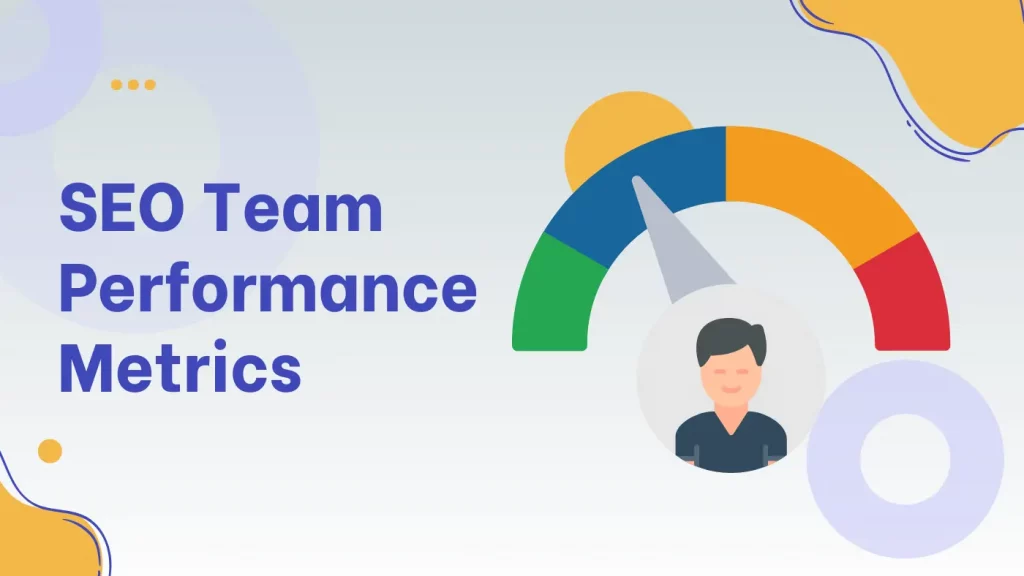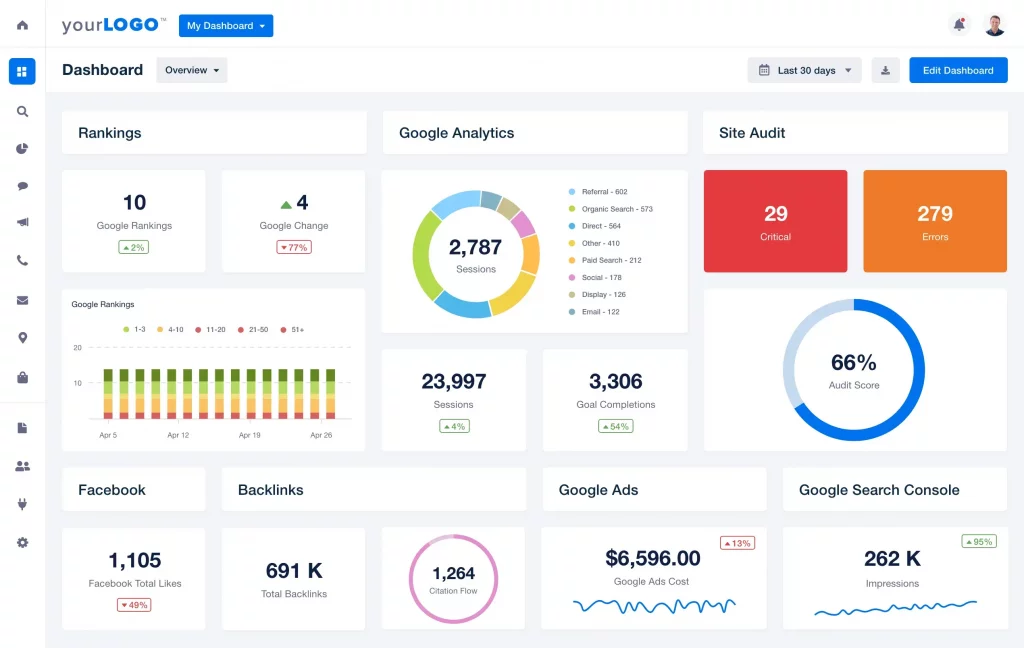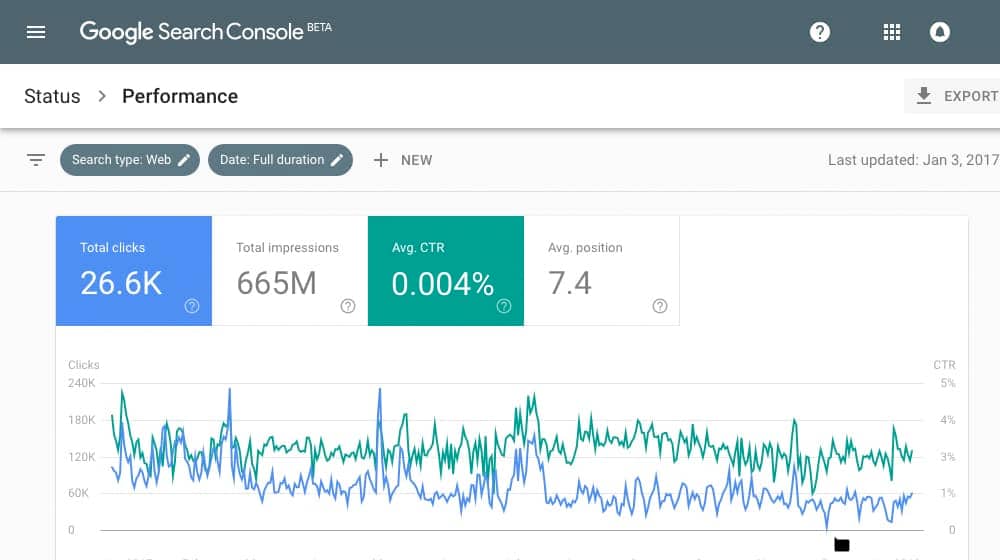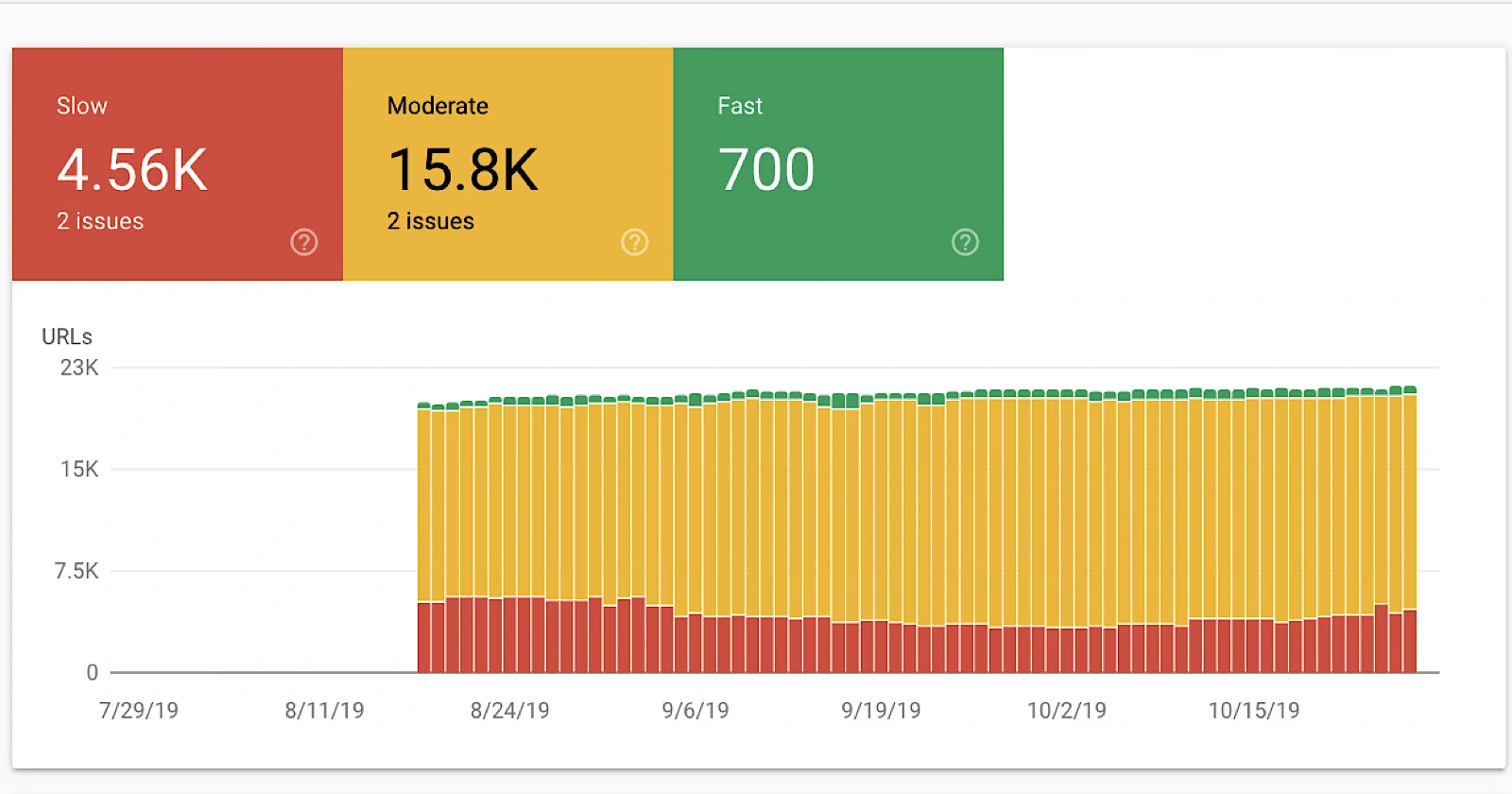Mastering SEO metrics for teams: your guide to winning strategies

Hey there, SEO enthusiasts..! As we pitch into the world of digital marketing, it’s critical to remember that SEO isn’t just about getting to the top of search results, it’s about understanding how we reach there, and what keeps us sustained in that place.
That’s where these performance metrics come into play.
Think of them all, since your SEO compass guides you through the ever-changing landscape of digital landscape.
Agencies that want long-term growth should constantly adapt to track results, and improve strategies and trends as data comes in. If you’re wondering the ways to enhance your strategies, you must first of all be familiar with SEO Key Performance Indicators (KPIs).
But what are KPIs, how important is this and what are the essential, advanced, and local KPIs for your SEO teams? And how to measure it? And what role does it play in SEO team management?
Let’s dive into the blog to explore answers to the above. Keep reading to learn more…!
Understanding SEO KPIs: your north star
What are SEO KPIs?
First of all, Let’s commence with the basics of tuning this topic. The first one is the Key Performance Indicators(KPI) in SEO.
This guides you to evaluate and measure the effectiveness and performance of an SEO campaign.
It gives you insights into keyword rankings, conversion rate, organic traffic, website visibility, and user engagement.
This does not only represent the metrics, rather it denotes the paramount signs of your SEO strategy.
Understanding SEO KPIs is crucial in Collaborative SEO efforts, as they help in measuring and enhancing the effectiveness of the strategies employed by the team.
They support us in understanding to ensure that all your efforts align with the business goals. It’s like having a fitness tracker for your client’s website..!
Aligning KPI with the agency business goals
Remember, every website is peculiar so it must be your KPIs.
Your KPI thrives as the reflection of how success is viewed for your business. If it’s increasing organic traffic, improving keyword rankings, and driving more conversions your KPI must be tied directly to all your business goals and milestones.
Aligning KPI with your agency goals is essential to efficiently manage performance as it allows you to communicate the strategy and vision to your team members and stakeholders.
It also offers the approach to track and assess performance and progress, determine issues or gaps, reward and celebrate achievements, adjusting and refine the actions and plans for your SEO.
How do you align KPIs with your company goals?
The Objective Key Results(OKR) framework is an efficient tool to align your KPI with the organizational goals. This indulges to set of measurable goals over different organizational levels in SEO efforts.
To kickstart, first, define your aims, these must be ambitions, inspiring, and aligned with the vision and mission of your company.
After this, define the key results that must be measurable, time-bound, realistic, and specific. Once you have set out the OKRs, you have to monitor performance and review the results against them.
Use feedback and data to analyze the progress and pick out the opportunities and challenges.
Finally, improve and update the OKRs by adjusting the action plans in SEO and refining them based on the learning and outcomes.
Celebrate successes with your team, learn from failures, and set out new OKRs for the next SEO cycle.
Essential SEO KPIs for teams
Organic traffic: the lifeline of your site
Organic Traffic signifies the number of visitors, arriving at your site, through search engines. It implies a testament to how efficient your SEO strategy is. More organic traffic? you’re on the perfect track ..!
This is one of the most significant metrics in consideration, as this progress defines you reaching the main SEO goal.: raising the count of people seeing and visiting your site.
If you work with Google Analytics, you can be able to track the daily searches in your website traffic.
In this Goto Audience → Overview Report, after this click on ‘Add segment’, and then select the “Organic Traffic” filed.
Keyword rankings: knowing where you stand
Monitoring where your keyword ranks on SERP, seems crucial. It reveals to you what’s working and what requires a tweak. Remember, it’s not just to rank for any keyword, rather it is about ranking for the right ones.
Keyword rankings are the crucial KPI since it directly correlate with the success of SEO.
Once you achieve the high search positions, you’re about to reach the other major objectives such as leads, conversions, and user traffic.

Source: Agency Analytics Dashboard – Keyword Rankings
You can monitor how the search position for the target keywords of your site is changing with tools like Ahrefs and Serpstat.
All you need to do is just to enter the domain, pick out the type of SERP( organic results), import the list of targeted keywords of your site, and commence rank tracking.
The fluctuations in keyword rankings enable you to modify your SEO strategy accordingly.
There are many tools available to track the different keywords and their rankings, how they are performing, and any differences that are happening every day.
Click-Through Rate (CTR): the first impression
CTR measures how frequently people who see your website in search results end up towards clicking on it. A low CTR means you ought to spruce your title tags and their meta descriptions.
CTR is also an important search engine ranking signal.

Source: Google Analytics Average CTR
For example, if your search snippets for your site don’t look appealing enough, even the high rankings won’t help you in attracting more visitors.
As a result, your CTR gives much to be desired.
The low value of CTR would convey to search robots that your website doesn’t meet the expectations of the users, which again leads to low rankings.
More often Focusing on the rankings and traffic, people frequently make the big mistake overlooking this CTR KPI.
This is evidence, of how better your link title and the related metadata appeal to the searchers for this search term(keyphrase or keyword)
For monitoring this CTR, go ahead with Google Search Console.
Backlink quality and quantity: building a strong foundation
Backlinks are the votes of confidence gained from other sites. However, it’s just about the quality of backlinks more with considering the quantity of backlinks that also matters. A single good backlink could be worth more than other hundred mediocre ones.
Page load time: speed matters
In this fast-paced internet world, speed is the king. A slow-loading page could take visitors away, hurting both SEO and your user experience.
There are many things, which slow down how rapidly the webpage loads, that consist of large image sizes, or may be due to the lagging server.
Users may take the decision to exit your website more quickly if they are not happy with the speed of the web pages.

Therefore assessing the webpage speed regularly to make sure it’s this optimized could enhance the bounce rate.
Google Search Console, has a report feature ‘Core Web Vitals’ that depicts How Google Scores your site web pages based on the actual user behavior.
Advanced SEO KPIs: going beyond the basics
Conversion rate: the ultimate goal
At the end of the day, it doesn’t represent just about traffic, it’s about what this organic traffic makes on your website. Are they buying anything? Are they signing up? Conversion rate denotes the percentage of visitors who undertake the desired action and it’s a goldmine of insights.
Bounce rate and time on page: understanding engagement
Bounce rate and time on the page make us understand if the visitors find the answers to what they’re looking for on your website. Low time on page or High bounce rate? It’s the right time to revisit your content strategy.
Bounce rate measures how many viewers are leaving your website, after looking at a particular webpage, both in terms of percentage viewers and number of viewers.
It also conveys to you which web pages a user is most likely causing the website to exit and which areas have to be enhanced on your website.
Researching the average bounce rate for similar websites may help you in setting a KPI goal.
If your bounce rate is higher than this competitive site, then you have to identify ways or strategies to reduce it. A user who spends a lot of time on the webpage or the entire website, then he is more likely to get engaged in your site content than the other user who quickly exits the page.
If you wish to raise the average time that the user spends on your webpage, then you could work on creating more interesting content and informative content for search engine users, or you can review how the competitors perform and determine what keeps the users sustained on the competitor sites.
Local SEO metrics: dominating the local scene
Local metrics seem to be crucial for local businesses. This consists of Google My Business listing performance, local backlinks, and rankings for local keywords.
When it comes to local SEO, particular metrics, come into play, focusing on user engagement and visibility within your targeted geographical area.
Here are certain key metrics for tracking your local SEO performance.
Insights of Google My Business (GMB)
Listing views: How frequently your GMB profile comes in search results and Maps.
Calls: Count of Phone calls, initiated by your GMB listing.
Reviews: Overall number of reviews and ratings implying the customer sentiments.
Website clicks: Count of clicks retrieved from GMB listing to your site.
Bookings: Number of reservations or appointments made through this GMB listing
Direction requests: Number of users, who request directions to your site or business.
Website Engagement and Traffic
Bounce rate from local traffic: defines the percentage of local visitors who leave your website after one page.
Organic traffic from local searches: count of visits generated through local keyword searches.
Local keyword rankings: your site positions for the relevant local keywords.
Time spent on the website by local visitors: engagement levels of local visitors with your site content.
Conversions from local traffic: it defines the rate at which the local visitor takes the desired actions on your site.
Additional Local SEO metrics
Backlinks from local websites: links from other sites that are relevant to your local region and industry.
Local landing pages: web pages focused on the specific regions or services targeting the local audience.
Mobile-friendliness: Website optimization for mobile devices is crucial for local searches. Citations: Mentions of the name and address of your business on other sites and directories.
Mobile performance: the mobile-first era
With more searches occurring on mobile, than ever before, your website’s mobile performance is non-negotiable. Loading times and mobile-friendly design come under this.
Mobile Optimization depicts the process of designing and developing a website, in an approach to making your website convenient and easy for users to access and traverse in their mobile devices itself.
This may involve optimizing the layout, site content, and the entire user experience for the touch-based interactions and small screens.
By optimizing the site to use on mobile devices, a business can enhance its user experience, reach a large audience, and raise its search engine rankings. Finally, it will lead to increased potential, higher sales, and brand awareness.
Mobile optimization is an important metric to focus on since people are more interested in having their data handy within their mobile and more and more people are fond of using mobile devices for searching information and accessing the internet.
Custom KPIs for Individual SEO Team Members
Personalized Goals for Diverse Roles
Every team member has a vital role to play in SEO performance. Technical SEO Specialists may zero in on crawl errors and onsite speed, while the Content creators may focus on engagement metrics.
Tailoring KPIs to the individual roles not alone supports tracking the performance however, it helps in personal growth as well.
Tailor the KPI metrics on the specific business needs.
For example,
If your business goal is brand awareness, concentrate on metrics like social media engagement, click-through rate, and impressions.
In the case of lead generation, give priority to conversion rates, qualified leads generated from organic search and form submissions.
Local SEO metrics
If your business has a local presence, include KPIs related to local SEO like online reviews, Google My Business metrics, and local search rankings.
With the intuitive software, you can customize the dashboards which can feature more widgets, displaying all your essential KPIs and local metrics you wish to show (and hide those you don’t really wish to display) in a matter of minutes.
You can easily integrate with more prominent data sources which you can customize, merge data, and portray the right SEO data in real-time for your team.
Tools and techniques for tracking KPIs
Tracking your key performance metrics is essential to use all the resources and time your team spends to determine their site in the first place.
To set an efficient tracking system for your KPIs is necessary to avoid more workload to your SEO team and the one which distracts them from the major roles.
The tracking process paves your team to travel in the right direction to gain positive SEO outcomes.
Here are the important points for measuring and tracking your KPIs appropriately.
Gathering Data Using a Tool or Software
You can make the automation in data collection with the help of some tool or software, and this facilitates tracking effectively.
In this way, you don’t have to depend on manual data entry, which may lead to expensive resource costs and human errors.
KPI tracking software is the best choice to acquire clear data that is accurate and reliable and gained frequently.
Most of the software displaying the KPI automatically is integrated into the SEO tool and is easy, and quick to use so that it will not take weeks or days for learning and implementation.
Choosing the Right Tools
There’s no shortage of tools there for SEO data, from Google Analytics to SEMrush.
The trick behind selecting this tool is to pick out the ones that best fit the demands of your team and integrate those tools into your daily workflow.
Data Interpretation: The Art and Science
Gathering all the data is one thing; making sense of the data is another thing. Learning to interpret the data correctly could guide you to forge informed decisions that could significantly boost your strategy in SEO.
Assess the progress
The frequency of time you defined while setting up the KPIs would identify how often you must assess the progress.
When it’s time, you’ll wish to look at the data and do a comparison of the original data you gathered before you start changes to the business.
Set different levels of progress which clearly lets your SEO team know how this KPI is performing.
You can also utilize the simple process like stoplight colors for highlighting at a glance the growth being made.
For instance:
Red 🔴 : if the progress is worse than the before stages, or denote it as ‘off track’ for achieving the target by the end of time period.
Yellow 🟡 : it can be represented as yellow in the report, if the progress is minimal, or if placed ‘at risk’ of meeting the target.
Green 🟢 : if your team has met or fulfilled the exceeded expectations.
Sharing with the Team
Ensure the entire team has been involved in the process of tracking and assessing the KPIs.
Doing this puts everyone on the same webpage, helps in understanding the roles, and avail ownership of the contribution to your company.
Within your team, you’ve to define the individual responsibilities associated with the KPI, and within metric tracking, you can have the perfect time to make adjustments in different teams for giving feedback.
Sharing the tracking data of the SEO metrics, through team meetings on a regular basis, or you can send the report through an internal messaging system, or CRM, or email.
You must also include the section on KPI in the annual SEO reports of your company so that your shareholders or clients or other parties are up-to-date on the growth.
Decide future actions
Once you have a discussion about the collected SEO metrics and the growth of the company’s KPIs, it’s time to make a potential decision about future SEO plans.
Most importantly, the team must be proactive – there’s nothing like waiting unless and until it becomes too late and scrambling to change the course.
Your SEO team must have a clear plan for what demands to happen for your brand if the KPI hasn’t been met, or it has not fulfilled the expectations.
This way, you could better provide any guesswork and confusion which can lead to more issues down the road.
KPIs are a necessary tool for any business, which wishes to be successful.
Take sufficient time for setting the metrics and for tracking them.
By doing this, you make sure your SEO team will be always aware of the big picture and working towards the goal and bottom line goals.
Good KPI examples
If your company hasn’t made these performance metrics a high priority in the past it would be difficult to identify how to utilize them efficiently for your business.
Here are some examples of the firm-level KPIs and the SEO team KPIs for getting started.
Marketing
- Raising the count of qualified users by X percentage.
- Hit X amount of organic site traffic this quarter.
- Achieve the cost per lead for becoming $ X.
Regular review and adaptation of KPIs
Regular review of the SEO KPI seems crucial to understanding the efficiency of the optimization efforts and to make data-driven decisions.
Review and analyze: Analyze the performance of each KPI and do the review.
Comparison of the metrics to the past periods: Are you trending upwards, or staying stable, or going downwards?
Pick out the trends and the patterns: look for the correlations between various metrics and the powerful explanations for the changes.
Benchmark against the industrial averages: how does your KPI performance in SEO differ in comparison to similar businesses?
Take action: Based on the assessment, make your strategic adjustments
Double down upon successful tactics: if some plan is working out, make an investment on that and more resources on the plan.
Pinpoint underperforming areas: Determine what’s not working in SEO, and identify the ways for the agency improvisation.
Experiment with the new strategies: Test the new tactics based on the competitor assessment and metrics data analysis, and how this change is going to enhance your SEO team outcomes.
Data Visualization of Performance Metrics
Do data visualization in the form of graphs and charts, helping you view the SEO patterns and trends more easily.
Share the findings: report the outcomes to the decision-makers and the clients.
Focussing on the long-term: Since SEO is a long-term game, do not get discouraged by the short-term fluctuation.
Remember to have regular meetings with your team and review all the SEO KPIs that are essential to make sure your site is achieving the business goals, its status, and discoverable.
By monitoring the right performance metrics, and making data-driven decisions, you may optimize the SEO strategy for the continued success rate.
Organize a review schedule: Decide how frequently you’ll assess the KPIs whether it is quarterly, weekly, or monthly in general depending on the campaign goals and industry.
Utilize the right tools: Several tools could aid in tracking the performance metrics and assess them for further decisions and plans.
Popular options such as Google Analytics, Google Search Console, Moz, or Semrush can help you in this tracking process and review.
The Ever-Evolving SEO Landscape
SEO is not meant to set it and forget it. You have to regularly review and adapt your KPIPs, which is the vital thing to stay connected and ahead of the curve. As search engines evolve daily, you should craft your strategy according to that.
Bottom line: cultivating a data-driven SEO culture
Performance metrics are not just quite numbers, they’re moreover the story of your SEO journey and it’s summary report.
The ability to assess your progress accurately by the performance metrics will make you review tactics to potentially focus more on SEO aspects that have proven to make improvements in revenue, traffic, rankings, and so on and identify the areas which all may not be working for your work
By fostering a unique culture that values data-driven insights, you’re setting your SEO team up to attain long-term success. Keep experimenting, refining, and keep watching as your SEO efforts bear fruitful outcomes.
To keep up with the ever-evolving world of SEO, continuous SEO team training and learning thrives as a key. Check out our blogs to help you learn more about your SEO path and keep updated and ahead in this dynamic game.
For agencies facing tough SEO competition, it’s a good idea to use the best methods, like scrum, to get better at teamwork. SEO Project Management Software can help with this. It teaches you about Scrum and how to work well with your team.
Remember, in the world of SEO, knowledge is always the power.

